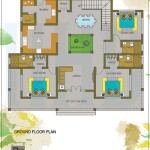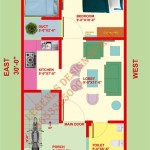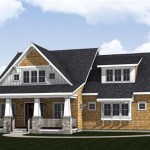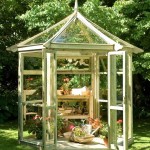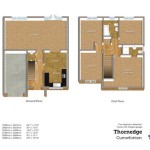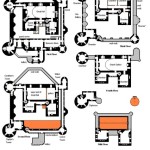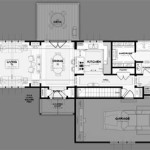Understanding Inverted House Floor Plans
Inverted house floor plans, also known as reverse living floor plans, represent a departure from traditional residential design. Instead of placing living areas on the ground floor and bedrooms on the upper floors, these designs strategically position the primary living spaces – such as the kitchen, living room, and dining area – on the upper levels of the house, while bedrooms and secondary spaces are located on the lower levels. This architectural arrangement is often driven by specific site conditions, aesthetic preferences, or lifestyle considerations. The adoption of inverted floor plans is becoming increasingly prevalent, reflecting a shifting focus on maximizing views, enhancing natural light, and optimizing overall livability.
The rationale behind inverting a floor plan is multifaceted. One primary motivator is the desire to capitalize on panoramic views. In locations with desirable scenery, such as coastal areas, mountainous regions, or urban environments, placing the living spaces on the upper floors allows residents to fully appreciate the surrounding landscape. Additionally, inverted floor plans can improve access to sunlight, particularly in areas where surrounding structures or vegetation might obstruct natural light on lower levels. The strategic placement of living areas on upper floors can also promote a greater sense of privacy and tranquility, separating these spaces from street-level noise and foot traffic. In some cases, inverted floor plans may be utilized to address specific site challenges, such as sloping terrain or flood-prone areas.
Maximizing Views and Natural Light
The most compelling argument for adopting an inverted house floor plan is its ability to maximize views. By positioning the main living areas on the upper floor, the design takes advantage of unobstructed sightlines. This is especially beneficial in locations with scenic vistas, such as oceanfront properties, hilltop residences, or homes overlooking valleys. Large windows and balconies can be incorporated into the upper-level design to further enhance the viewing experience, creating a direct connection between the interior living spaces and the surrounding environment. The elevated perspective also offers a greater sense of privacy, shielding residents from the prying eyes of neighbors or passersby.
Beyond visual appeal, inverted floor plans also optimize access to natural light. Upper floors typically receive more direct sunlight than lower levels, especially in areas with dense vegetation or closely spaced buildings. By placing the living spaces on the upper floors, the design ensures that these areas are bathed in natural light throughout the day, reducing the need for artificial lighting and creating a brighter, more inviting atmosphere. The increased natural light can also have positive psychological effects, promoting a sense of well-being and improving overall mood. Strategically placed skylights can further enhance natural light penetration, illuminating even the innermost areas of the upper floor.
Furthermore, the placement of living spaces on the upper floors can influence the interior design choices. With expansive views and abundant natural light, designers may opt for lighter color palettes and minimalist furnishings to create a cohesive and harmonious living environment. The emphasis shifts from merely decorating the space to curating an experience that integrates the interior with the exterior surroundings. The use of reflective surfaces, such as mirrors and glass, can further amplify the natural light and create a sense of spaciousness.
Addressing Site-Specific Challenges
Inverted floor plans are not solely driven by aesthetic considerations; they can also be a practical solution for addressing site-specific challenges. One common application is on sloping lots, where an inverted design can minimize the need for extensive excavation and grading. By positioning the bedrooms and secondary spaces on the lower level, which is partially buried into the slope, the design can create a more stable and level foundation for the upper-level living areas. This approach can not only reduce construction costs but also minimize the environmental impact of the project.
Another scenario where inverted floor plans prove beneficial is in flood-prone areas. By elevating the main living spaces above the potential flood level, the design can protect these critical areas from water damage. The lower level, which contains the bedrooms and secondary spaces, can be designed with flood-resistant materials and construction techniques to mitigate the impact of flooding. This approach provides peace of mind for homeowners and helps to reduce the risk of costly repairs and property damage.
Moreover, inverted floor plans can be utilized to address privacy concerns on challenging sites. For example, if a property is located adjacent to a busy street or public area, placing the bedrooms on the lower level can provide a greater degree of privacy and sound insulation. The upper-level living areas, which are typically more open and exposed, can be strategically positioned to minimize visual intrusion from the outside world. This approach allows residents to enjoy the benefits of natural light and views without sacrificing their privacy.
Lifestyle Considerations and Practicality
Beyond views and site constraints, lifestyle considerations play a significant role in the decision to adopt an inverted house floor plan. For individuals who prioritize outdoor living, placing the living areas on the upper floor can create direct access to balconies, decks, or rooftop terraces. This arrangement allows for seamless integration of indoor and outdoor living spaces, facilitating al fresco dining, socializing, and relaxation. The upper-level location also provides a greater sense of privacy for outdoor activities, shielding residents from street-level noise and activity.
In contrast, the lower-level bedrooms can offer a more private and secluded retreat. This arrangement is particularly appealing to families with young children, as it allows parents to maintain a degree of separation from the children's sleeping quarters. The lower-level bedrooms can also be designed with features that promote relaxation and tranquility, such as soundproofing, blackout curtains, and comfortable furnishings. This creates a dedicated space for rest and rejuvenation.
However, inverted floor plans are not without their potential drawbacks. One common concern is the increased reliance on stairs, which can be challenging for individuals with mobility issues. To mitigate this issue, designers may incorporate elevators or ramps into the design. Another consideration is the potential for increased noise transmission between the upper and lower levels. To address this, soundproofing materials and techniques can be utilized during construction. Ultimately, the decision to adopt an inverted house floor plan should be carefully considered, taking into account the specific needs and preferences of the homeowner.
The layout can also present challenges regarding access to utilities. Plumbing and electrical systems need to be carefully planned to accommodate the inverted arrangement, ensuring efficient and reliable service to both the upper and lower levels. This might require additional planning and potentially increase construction costs. Furthermore, furniture moving can be more difficult with the living spaces on the upper floor, requiring careful consideration of access points and the size of furniture pieces. The layout of the inverted floor plan should be carefully reviewed with these logistical challenges in mind.
In conclusion, inverted house floor plans offer a unique approach to residential design, driven by a desire to maximize views, enhance natural light, and address site-specific challenges. While they may not be suitable for every situation, they can be a powerful tool for creating a truly exceptional and livable home. The key to success lies in careful planning, a thorough understanding of the site conditions, and a clear vision of the homeowner's lifestyle and preferences. The increasing popularity of inverted floor plans demonstrates a growing appreciation for innovative design solutions that prioritize both aesthetics and functionality.

Reverse Floor Plans With Living Spaces Up 23128jd Architectural Designs House

65 Reverse Living House Plans Ideas Design

Upside Down Coastal House Plan 970015vc Architectural Designs Plans

12 Reverse Living Ideas Upside Down House Floor Plans

Reverse Living House Plans Beach Homes W Inverted Floor

Reverse Floor Plans With Living Spaces Up 23128jd Architectural Designs House

Gallery Of Inverted House The Oslo School Architecture And Design Kengo Kuma Associates 28

Reverse Layout Two Story Home Plan 69009am Architectural Designs House Plans

Inverted Floor Plan Coastal House Plans From Home

Reverse Living House Plans Beach Homes W Inverted Floor

